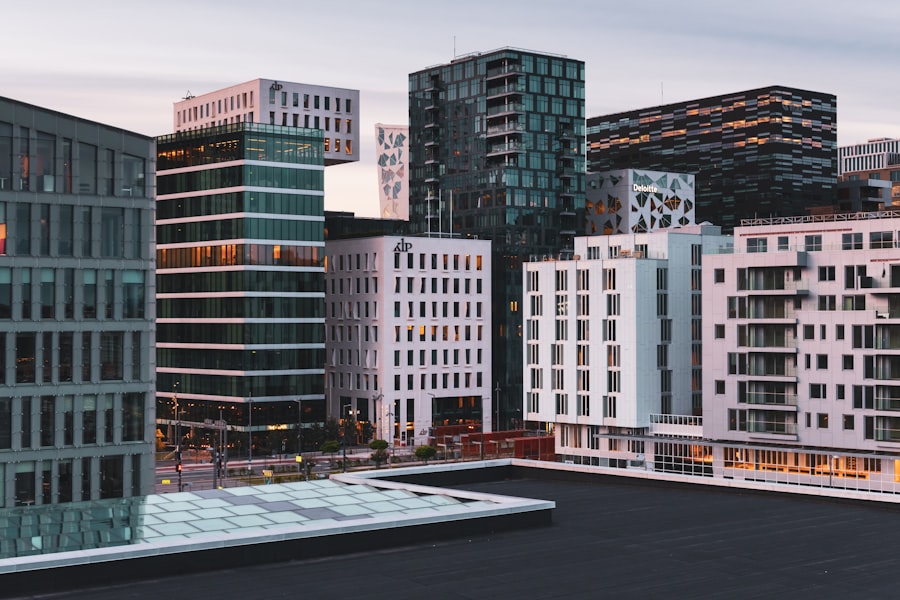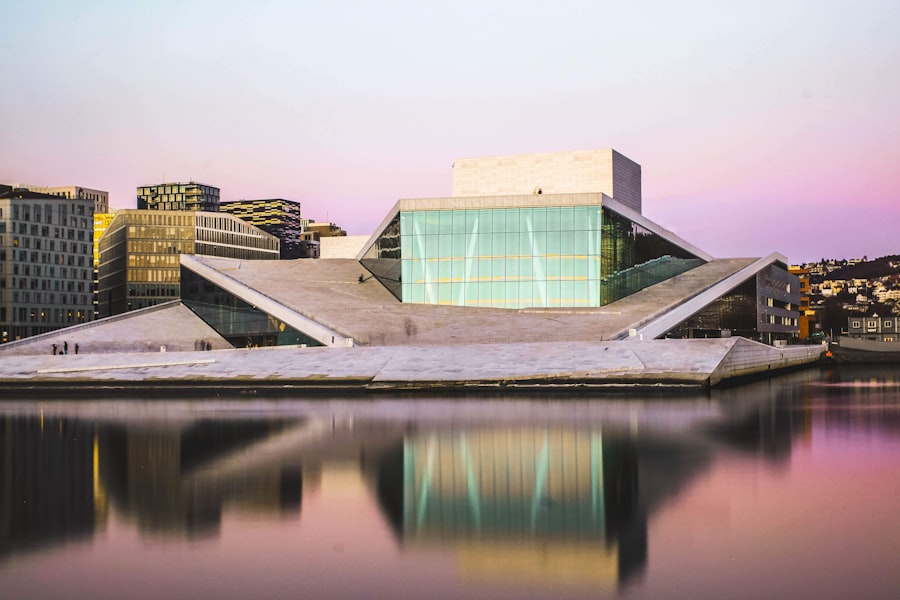The matpakke, a quintessential element of Norwegian culinary tradition, has a rich history that reflects the country’s agricultural roots and the practical needs of its people. Originating in the early 20th century, the matpakke was born out of necessity, as Norwegians sought a convenient way to carry their meals while working in the fields or commuting to urban centres. The concept of a packed lunch was not unique to Norway, but the matpakke evolved into a distinctive cultural symbol, embodying the values of simplicity, sustainability, and resourcefulness that are deeply ingrained in Norwegian society.
As Norway transitioned from an agrarian economy to a more industrialised one, the matpakke remained a staple for workers across various sectors. It became a common sight in schools, offices, and construction sites, where individuals would take a break to enjoy their homemade lunches. The matpakke is not merely a meal; it represents a moment of pause in the busy day, a time to reconnect with one’s roots and appreciate the flavours of home.
Over the decades, this humble packed lunch has become an integral part of Norwegian identity, celebrated for its practicality and nutritional value. Take the first step. Book a consultation with the Norway Relocation Group for your move to Norway.
Summary
- The matpakke has been a traditional Norwegian packed lunch for centuries, dating back to the time when people worked in the fields and needed a hearty meal to sustain them throughout the day.
- The matpakke holds great importance in Norwegian culture, symbolizing simplicity, practicality, and a strong connection to nature and the outdoors.
- Essential ingredients for a classic matpakke include whole grain bread, cheese, cured meats, and a variety of toppings such as cucumber, tomato, and lettuce.
- Modern twists on the traditional matpakke include using alternative breads, spreads, and fillings, as well as incorporating international flavours and ingredients.
- Tips for packing a nutritious and delicious matpakke include using fresh, high-quality ingredients, balancing protein, carbohydrates, and fats, and avoiding excessive use of processed foods and sugary snacks.
The Importance of the Matpakke in Norwegian Culture
In Norway, the matpakke is more than just food; it is a cultural artefact that encapsulates the essence of Norwegian life. It signifies a connection to family and tradition, as many recipes and packing methods are passed down through generations. The act of preparing a matpakke often involves family members coming together in the kitchen, fostering bonds and instilling values of health and sustainability.
This communal aspect highlights the importance of food in Norwegian culture, where meals are often seen as opportunities for connection and conversation. Moreover, the matpakke serves as a reflection of Norway’s commitment to environmental sustainability. With an increasing awareness of food waste and its impact on the planet, many Norwegians have embraced the matpakke as an eco-friendly alternative to disposable takeaway meals.
By preparing their lunches at home, individuals can control portion sizes, reduce packaging waste, and make conscious choices about ingredients. This cultural practice aligns with Norway’s broader environmental goals and showcases how traditional customs can adapt to contemporary challenges.
Essential Ingredients for a Classic Matpakke

A classic matpakke typically consists of simple yet wholesome ingredients that are both satisfying and nutritious. Bread is the cornerstone of this packed lunch, with rye or whole grain varieties being particularly popular due to their hearty texture and health benefits. Topped with butter or margarine, the bread serves as a base for various fillings that can cater to different tastes and dietary preferences.
Common choices include slices of cheese, cured meats like salami or ham, and even fish such as mackerel or herring, which reflect Norway’s coastal heritage. In addition to the main components, a well-rounded matpakke often includes fresh vegetables and fruits. Slices of cucumber, tomatoes, or bell peppers add crunch and colour, while seasonal fruits like apples or berries provide natural sweetness.
Nuts and seeds can also be included for an extra boost of energy and nutrition. The beauty of the matpakke lies in its versatility; it can be tailored to suit individual preferences while still adhering to traditional elements that make it distinctly Norwegian.
Variations and Modern Twists on the Traditional Matpakke
While the classic matpakke remains beloved by many, modern interpretations have emerged that reflect changing tastes and lifestyles. One popular variation is the use of wraps instead of traditional bread. Tortilla wraps filled with fresh vegetables, proteins, and spreads offer a convenient alternative that is easy to eat on the go.
Additionally, some individuals have embraced plant-based options, incorporating hummus, avocado, or tofu into their matpakke for a healthier twist. Another modern trend is the inclusion of international flavours in the matpakke. As Norway becomes increasingly multicultural, many people are experimenting with ingredients from around the world.
For instance, adding spicy sriracha sauce or using Asian-inspired pickled vegetables can elevate the traditional packed lunch into something exciting and new. These variations not only reflect personal tastes but also celebrate Norway’s evolving culinary landscape.
Tips for Packing a Nutritious and Delicious Matpakke
Creating a nutritious and delicious matpakke requires thoughtful planning and consideration of ingredients. One essential tip is to focus on balance; aim for a combination of carbohydrates, proteins, healthy fats, and plenty of fruits and vegetables. This ensures that your packed lunch will provide sustained energy throughout the day.
Incorporating whole grains in your bread or wraps can enhance fibre content, while lean proteins such as chicken or legumes can keep you feeling full. Another important aspect is variety; including different flavours and textures can make your matpakke more enjoyable. Experimenting with various spreads—such as pesto or cream cheese—can add depth to your sandwiches.
Additionally, consider packing small containers of dips or dressings to accompany your vegetables or crackers. This not only enhances taste but also encourages you to consume more fresh produce throughout the day.
How to Keep Your Matpakke Fresh and Tasty

To ensure that your matpakke remains fresh and appetising until lunchtime, proper packing techniques are crucial. One effective method is to use airtight containers or reusable silicone bags that prevent moisture from seeping in. If you’re including items that may wilt or spoil quickly—such as lettuce or tomatoes—consider packing them separately from other ingredients until you’re ready to eat.
Temperature control is also vital for maintaining freshness. If your matpakke contains perishable items like dairy or meat, using an insulated lunch bag with ice packs can help keep everything cool until lunchtime arrives. Additionally, preparing your matpakke the night before can save time in the morning while allowing flavours to meld together overnight for an even tastier meal.
Matpakke Etiquette: How and When to Enjoy Your Packed Lunch
Matpakke etiquette is an essential aspect of enjoying this traditional packed lunch in Norway. Typically, Norwegians take their matpakke during breaks at work or school, often gathering with colleagues or friends to share their meals. This communal aspect fosters camaraderie and allows individuals to exchange ideas about their packed lunches—what works well and what could be improved.
When it comes to enjoying your matpakke, it’s customary to take a moment to appreciate the meal before diving in. Many people take pride in their preparation skills and enjoy discussing their choices with others. It’s also common to pair your matpakke with a warm beverage like coffee or tea, enhancing the overall experience and making lunchtime feel like a special occasion rather than just another meal.
The Environmental Benefits of the Matpakke
The matpakke offers significant environmental benefits that align with contemporary sustainability goals. By preparing meals at home rather than purchasing takeaway options, individuals can significantly reduce food waste and packaging materials associated with single-use containers. This practice not only lessens one’s carbon footprint but also promotes mindful consumption habits.
Furthermore, many Norwegians prioritise local and seasonal ingredients when crafting their matpakke. This commitment to sourcing food from nearby producers supports local economies while minimising transportation emissions associated with imported goods. By embracing these environmentally friendly practices within their packed lunches, Norwegians contribute positively to both their health and the planet.
Matpakke for All Ages: Packed Lunch Ideas for Kids, Teens, and Adults
The versatility of the matpakke makes it suitable for all ages, from young children to adults in professional settings. For kids, fun shapes using cookie cutters can transform ordinary sandwiches into exciting creations that are visually appealing. Including colourful fruits like grapes or strawberries alongside bite-sized cheese cubes can make lunchtime more enjoyable for little ones.
For teenagers who may have busier schedules or specific dietary preferences, incorporating trendy items like sushi rolls or quinoa salads can cater to their tastes while still providing essential nutrients. Adults can opt for more sophisticated combinations such as smoked salmon on rye bread paired with cream cheese and capers or hearty grain bowls filled with roasted vegetables and protein sources like chickpeas or chicken.
Matpakke on the Go: Portable and Convenient Packed Lunch Options
In today’s fast-paced world, convenience is key when it comes to meals on the go. The matpakke adapts well to this need by offering portable options that are easy to transport without sacrificing quality or taste. Bento boxes have gained popularity as they allow for compartmentalised packing—perfect for those who enjoy variety in their lunches.
Additionally, snack-sized portions of nuts, dried fruits, or granola bars can complement your main meal while providing quick energy boosts throughout the day. Smoothies packed in reusable bottles are another excellent option for those who prefer liquid nourishment without compromising on nutrition.
Matpakke Inspiration: Creative and Unique Packed Lunch Ideas for Every Day of the Week
To keep lunchtime exciting, it’s essential to explore creative ideas for your matpakke throughout the week. On Mondays, consider starting with a classic Norwegian open-faced sandwich topped with shrimp salad and fresh dill—a delightful way to kick off the week! Tuesdays could feature Mediterranean-inspired wraps filled with falafel, tzatziki sauce, and crisp vegetables.
As you move through the week, try incorporating global flavours such as Mexican burritos on Wednesdays or Asian-inspired rice paper rolls on Thursdays. Fridays can be reserved for indulgent treats like mini quiches or homemade pastries that celebrate the end of the workweek. By diversifying your matpakke options each day, you’ll not only enjoy delicious meals but also discover new culinary inspirations along the way.
In conclusion, embracing the tradition of matpakke offers numerous benefits beyond mere sustenance; it fosters connections within families and communities while promoting sustainable practices that resonate with modern values. For those looking to deepen their understanding of Norwegian culture through language learning, consider enrolling in courses at NLS Norwegian Language School in Oslo. Their comprehensive programmes not only teach you the language but also immerse you in cultural nuances like those surrounding the beloved matpakke—making your experience truly enriching!
Learn more about the Norwegian classes at the NLS Norwegian Language School in Oslo

